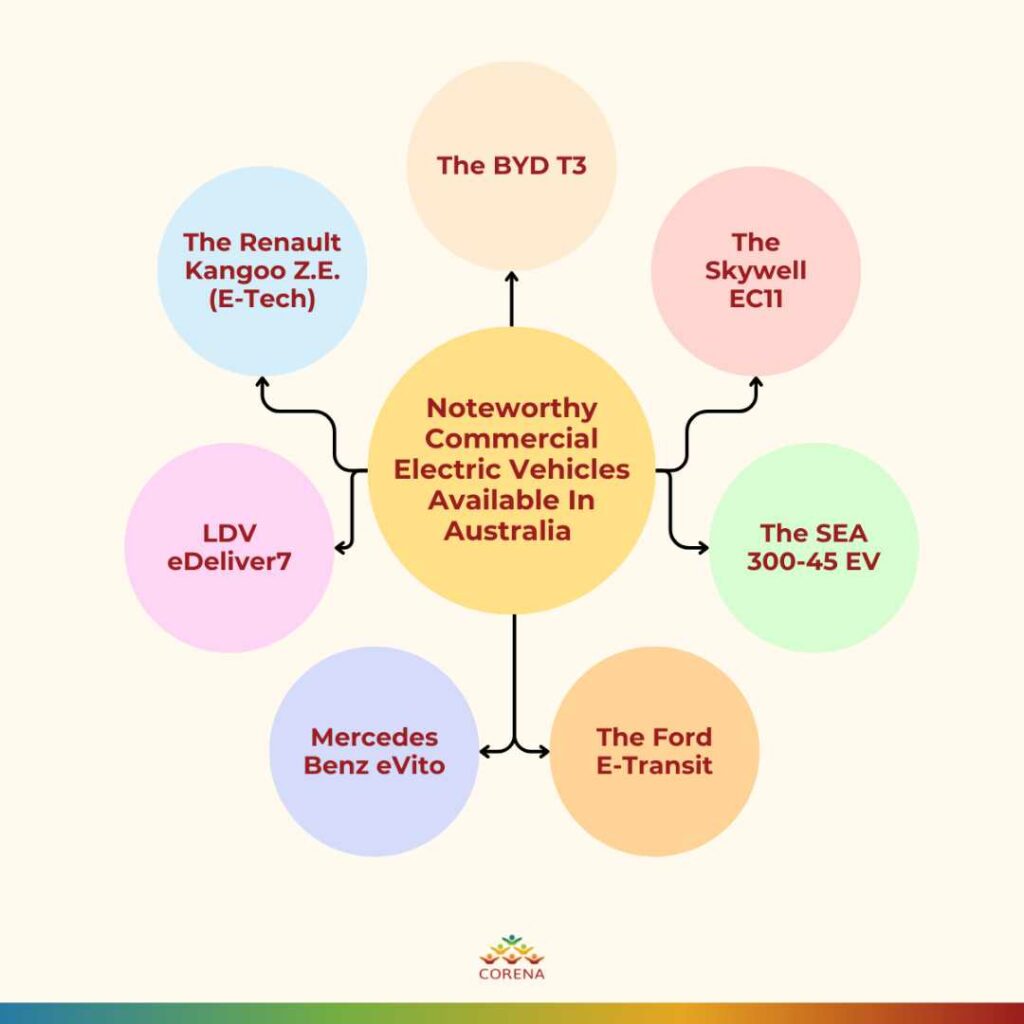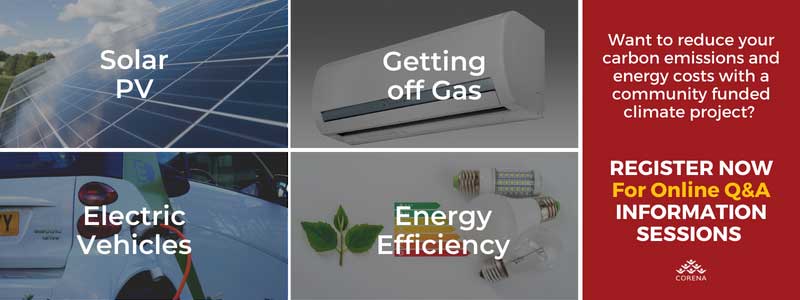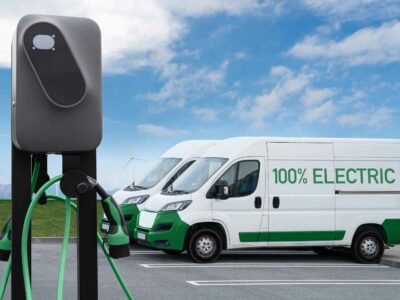With the world progressing ever more decisively towards decarbonisation, thankfully, within the transportation industry, many automotive manufacturers have committed to transitioning their vehicle offerings to electric rather than internal combustion-based vehicles, paving the way for a greener future. As such, a new variety of commercial electric vehicles have been developed and are coming to market. The options for both consumers and businesses are growing rapidly with each passing year.
Of particular interest to organisations and businesses are new models of electric buses, electric vans, electric utes, and more. Apart from reduced emissions and fuel costs, there are many other benefits to transitioning to an electric vehicle fleet.
CORENA works with a wide range of not for profits, social enterprises and community organisations, many of which have one or several vehicles as part of their operations. These might be delivery vans or trucks, vehicles for home visits or staff use or even buses for transporting clients.
Fully-Electric & Zero Emissions
Battery electric vehicles are 100% powered by electricity and do not use fossil fuel to function. The vehicle’s large battery pack is charged by plugging it into the grid at designated charging stations or at home, with electricity either from your own solar system or from the grid, powering the entire drivetrain.
Learn more in Electric Vehicles Guide for Non Profits
In this guide we’ll look at some different types of electric vehicles which may be suitable for commercial purposes, which can help to reduce your organisation’s carbon footprint and contribute to the goal of net zero emissions on the road.
Noteworthy Commercial Electric Vehicles Available In Australia
While much attention is lavished on flashy consumer electric vehicles, commercial electric vehicles are real performers when it comes to improving the carbon emissions of cities and nations.
Many non profits operate food box or food rescue operations which need delivery vans. Electric vehicles are at their most efficient driving in cities and are well suited to delivery driver applications, often replacing diesel vans which are expensive to run. By opting for commercial electric vehicles instead of internal combustion vehicles, a massive impact can be made on reducing pollution in cities and greenhouse gases emitted by society at large.
Here are some commercial electric vehicles that may be worth considering that are available right now or will be released soon in Australia.

The Renault Kangoo Z.E. (E-Tech)
The Renault Kangoo Z.E. was the first electric van made available in Australia, coming to the market in about 2020. However, the vehicle is now known as the Renault Kangoo E-Tech and can provide approximately 200 kilometres of range on a single charge. It is also capable of carrying up to 650 kilograms inside its four-cubic-meter cargo space.
The BYD T3
This good-looking electric vehicle is made by Chinese car manufacturer Build Your Dreams, and can carry about 700 kilograms thanks to its 3.8 cubic meters of interior space. The BYD T3 Van can provide about 300 kilometres of driving range at a top speed of about 100 kilometres per hour.
The Skywell EC11
Chinese company Skywell has made this 4.5-ton electric vehicle available in Australia with an impressive 1.7-ton carrying capacity. It can even tow as much as 1250 kilograms behind it. The Skywell EC11 Van can either be used as a cargo vehicle or as a 12-seater personnel carrier and is capable of travelling about 288 kilometres on a single charge.
The SEA 300-45 EV
When it comes to medium-duty trucks, the SEA 300-45 commercial electric vehicle made by the Melbourne-born company SEA Electric is a highly versatile vehicle that can travel up to 300 kilometres on a single charge. It is capable of carrying more than two tonnes of cargo. Other models are being developed to carry even larger loads.
The Ford E-Transit
The Ford E-Transit is an electric van that can drive about 317 kilometres on a single charge and can accommodate about 12.4 cubic metres of space with a payload of about 1016 kilograms. Impressively, this vehicle can charge to nearly full power in less than an hour. A smaller version of this vehicle is set to arrive early in 2024, targeting a driving range of an impressive 380 kilometres per charge.
Mercedes Benz eVito
Mercedes-Benz has also introduced a range of electric vans. The midsize eVito Panel Van can go 314 kilometres on a single charge, while the eVito Tourer can travel about 360 kilometres. Mercedes has also launched a new electric commercial vehicle called the Sprinter Panel Van.
LDV eDeliver7
LDV Australia will be introducing the new eDeliver7 electric van series in 2024. These vans, made by Chinese electric vehicle manufacturer Maxus, are set to deliver about 300 to 400 kilometres of range on a single charge. These vans have a maximum capacity of nearly six cubic metres, making them ideal for carrying goods to and fro.
Second Hand Commercial Electric Vehicles
Imported second hand electric vans are also now becoming available via social enterprise the Good Car Co. You can see what they have available here. This can be a cost effective way of getting an electric van without having to wait for manufacturers to release their electric vans here.
Electric Vehicles Funding For Non-Profit, Community Organisations & Social Enterprises
Here at CORENA, We receive, record, and transparently report voluntary contributions from the public. We use that money to give interest-free loans to fund:
- Electric Vehicles
- Solar Panels (Can be used to charge electric vehicles)
- Energy Efficiency
- Getting Off Gas – Replacement of fossil gas appliances with electric alternatives
- A combination of the above
We actively support the adoption of electric vehicles and provide interest-free loans to eligible organisations. You don’t pay any interest on your CORENA loan, and the quarterly loan repayments are set to be a little less than the savings on your operating costs averaged over a year. This means you are never out of pocket, but you don’t save much overall in the short-term. However, after your loan is fully repaid you reap the full financial benefit of having lower operating costs.
To learn more, check out how to apply for a project loan, or register for one of our upcoming Online Q&A Information Sessions.


